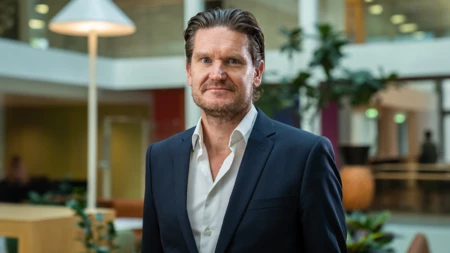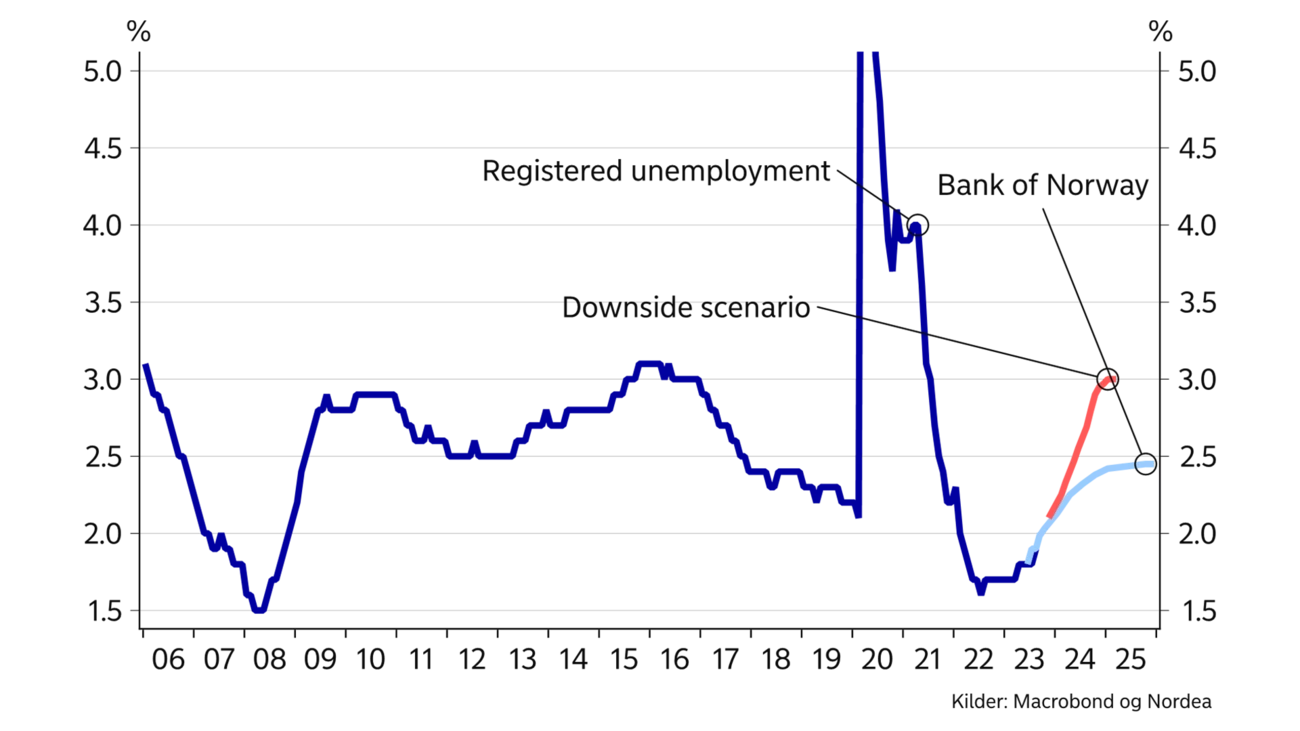
- Name:
- Kjetil Olsen
- Title:
- Chief Economist, Nordea Norway
Norges Bank has hiked its policy rate faster and warned of a higher interest rate peak than previ-ously. We think the policy rate will peak in September at 4.25%, but we are not sure it will stop there. The interest rate market is now discounting rate cuts next year. In our view, interest rates will not start to gradually move lower until 2025. A faster pace of rate cuts would require a much more severe downturn in the Norwegian economy and a more rapid rise in unemployment than Norges Bank currently projects. And even then, Norges Bank would likely proceed at a moderate pace. Hence, we see very little downside to interest rates over the next few years.

Since interest rates started rising a couple of years ago, many have believed that they were about to peak and the policy rate would soon be cut again. However, the peak level has been raised and steadily put off due to stronger price pressures and a more resilient economy than expected. Now it looks like Norges Bank’s policy rate is close to peaking again. We think it will most likely peak in September at 4.25%, but we cannot rule out a slightly higher peak. In our view, a much weaker NOK is the biggest risk factor for an even higher interest rate peak than we estimate at present. A new sharp NOK weakening will add to price pressures and could trigger stronger wage growth. Norges Bank still worries that growth in prices and wages could take hold at an elevated level, although growth and economic pressures should abate going forward and unemployment will rise.
Many expect that the policy rate will be cut as soon as unemployment starts to rise. Norges Bank has long predicted a rise in unemployment, but despite an expected rise from the current 1.9% to almost 2.5% towards end-2024, the central bank’s interest rate forecast only shows a marginally lower interest rate from the end of next year. Norges Bank does not forecast a drop in inflation towards 2% until end-2026, when the policy rate is expected to be around 3%.


Even in the case of a severe downturn in the Norwegian economy, Norges Bank would proceed at a moderate pace.
To speed up the interest rate cuts, either inflation will have to subside more quickly or the economic slowdown must be much more severe than in the baseline scenario. Inflation will abate next year, but with continued strong wage growth and the fallout from the NOK weakening, it will be a long time before underlying inflation is back in the vicinity of Norges Bank’s 2% inflation target. That is why we see a greater probability of a more severe economic downturn than a more rapid drop in inflation.
We have looked at a downside scenario where unemployment rises as much as during the financial crisis (see Chart A). There is uncertainty about the effects of the already implemented rate hikes, and in this scenario when the effects come they will be much stronger than assumed. But in this scenario the rate cuts will probably be more moderate than during the financial crisis. Firstly, it will take time before it becomes evident that economic trends are significantly weaker. A first rate cut is therefore not likely to occur until Q2 next year at the earliest. Furthermore, even if unemployment increases more than anticipated, price growth will still be well above the target. The central bank will therefore not be able to look exclusively at developments in the real economy, but will have to keep an eye on the strong inflation. This is how the current situation is different from the financial crisis. Also, the NOK will be vulnerable. Aggressive rate cuts would weaken the NOK considerably and lead to further upward price pressure. All in all, it will probably take a lot for Norges Bank to cut interest rates more than once per quarter in such a downside scenario.



Sustainability
Amid geopolitical tensions and fractured global cooperation, Nordic companies are not retreating from their climate ambitions. Our Equities ESG Research team’s annual review shows stronger commitments and measurable progress on emissions reductions.
Read more
Sector insights
As Europe shifts towards strategic autonomy in critical resources, Nordic companies are uniquely positioned to lead. Learn how Nordic companies stand to gain in this new era of managed openness and resource security.
Read more
Open banking
The financial industry is right now in the middle of a paradigm shift as real-time payments become the norm rather than the exception. At the heart of this transformation are banking APIs (application programming interfaces) that enable instant, secure and programmable money movement.
Read more